I'm a recent Ph.D. graduate from the Department of Physics and Astronomy at the University of
California, Davis. I completed my M.S. in Physics at UC Davis in 2018 and I completed my B.S. in
physics at Ithaca College in 2017. When not working I
spend my time rock climbing, running, hiking, cooking, and playing with my two cats Kelvin and
Joule and my dog Plum.
My research is focused on weak chemical tagging, a tool used extensively in galactic archaeology.
Galactic archaeology is the science of understanding the formation and evolution of galaxies through
precise measurements of their current state. Weak chemical tagging is a technique used to identify
the birth location of a star using galactic chemical evolution models and measurements of stellar
abundances. This technique works because stellar abundances are invariant (unchanging) observables,
so they directly connect a star to its birth location. For all of the work that I do, I use
hydrodynamic zoom-in simulations of Milky Way-like galaxies from the FIRE (Feedback In Realistic Environments)
project.
Spatial distribution of elemental abundances in newly formed stars across cosmic time
Following up on my previous work (paper link) I have
characterized the 3-D elemental abundance distributions of newly formed stars (paper link). This defines the initial conditions for
chemical tagging. In this work, I provide functional forms and best fits to the evolution of stellar
abundances, the evolution of galactic radial abundance gradients in newly formed stars, and the
evolution of azimuthal scatter in abundances in newly formed stars. Download figure data from the
paper here
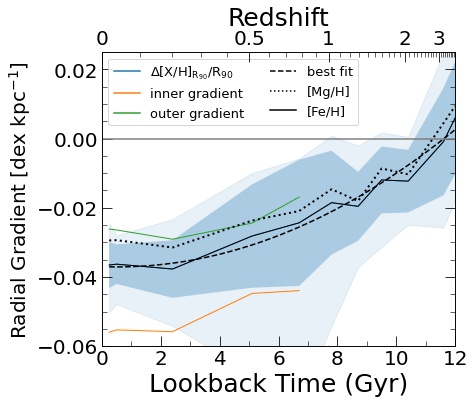
[Fe/H] and [Mg/H] radial gradient redshift evolution
Disk-wide stellar gradients, like gas gradients tend to get steeper with time. Additionally, we
fit two component linear profiles to the radial abundance gradients in stars and find the inner
gradient to be consistently steeper than the outer gradient.
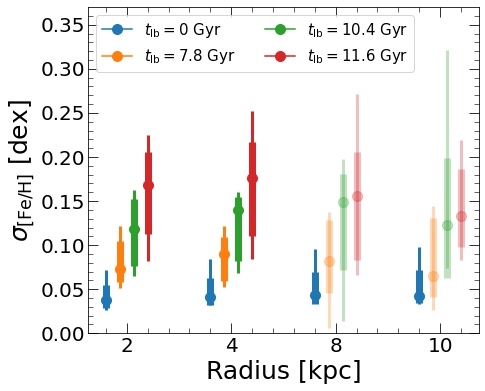
360 degree azimuthal scatter as a function of time and radius
Azimuthal scatter in stellar abundances is nearly independent of radius. Additionally, azimuthal
abundance scatter in stars is on average less than the scatter seen in all gas. However, the
scatter still decreases with decreasing redshift.
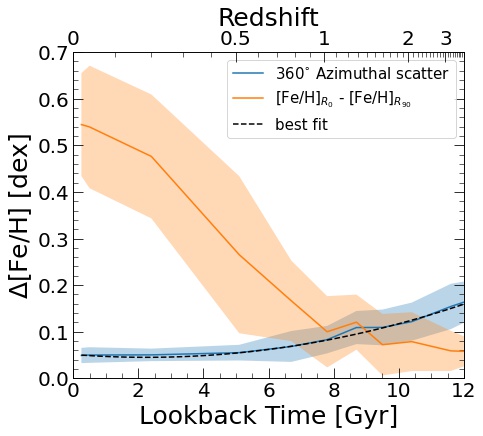
A comparison of radial variations in abundance and azimuthal scatter
We find a transition lookback time after which the radial abundance variations are larger than
the average 360 azimuthal abundance scatter. This transition time is approximately 1 Gyr earlier
than the time seen in gas.
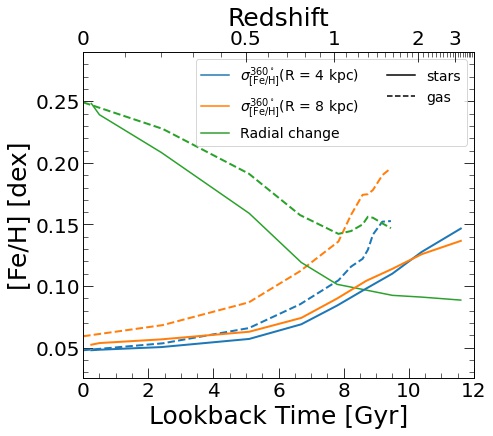
Comparison with previous results of gas-phase abundances
The solid lines show the radial and azimuthal abundance variations in newly formed stars, the
dashed lines show these variations as reported in my previous paper. At present day, stellar and
gas variations are comparable, however the variations are smaller in newly formed stars than in
all gas at earlier times.
Redshift evolution of 3-D gas-phase abundance homogeneity
To understand the effectiveness of chemical tagging we need to first understand the initial
conditions from which stars form. In my first paper,
I explored the evolution of the 3-D distribution of abundances in the gas disks of Milky Way-like
galaxies. The main takeaway from this paper is that gas disks are not azimuthally homogenous across
time, as has been typically assumed. There exists a transition redshift for galaxies before which
azimuthal variations dominate over radial gradients and current chemical tagging techniques are
likely limited by current galactic chemical evolution models.

[O/H] radial gradient redshift evolution
We find radial gradients tend to get steeper with time as galaxies become more rotationally
dominated.
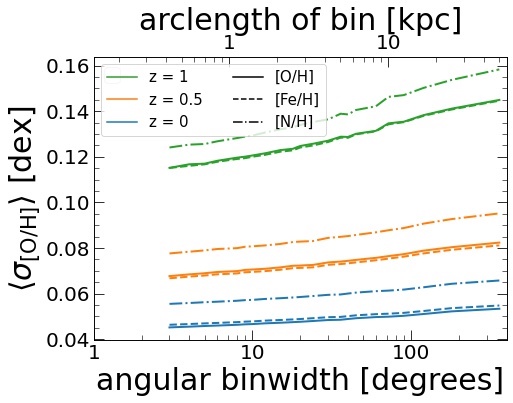
Redshift and scale dependence of azimuthal scatter
We find galaxies have strong azimuthal scatter at early times which decreases to match observed
values at z=0.
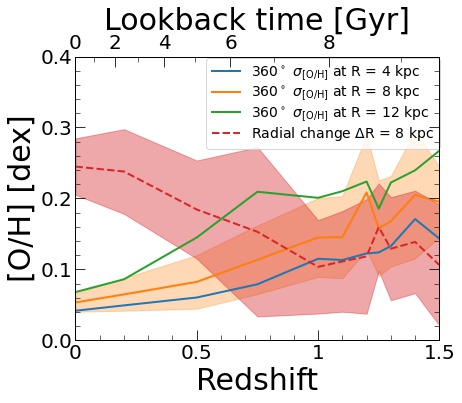
Redshift evolution of azimuthal scatter and radial variations
We find galaxies transition from azimuthal scatter dominated to radial gradient dominated around
z~0.8.
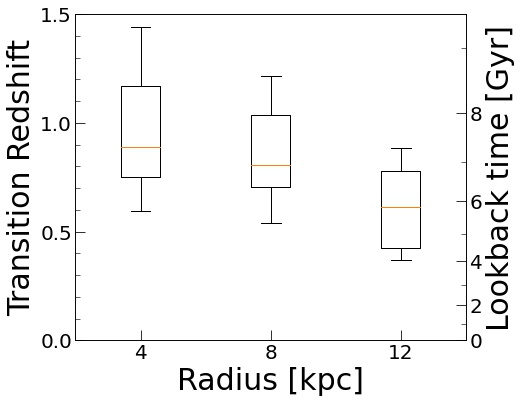
Transition redshifts
The distribution of transition redshifts for our suite of 11 galaxies.











